By now, you’ve probably heard that we were duped by the age-old prescription saying we need eight glasses of H2O per day. The science behind the fabled rule was, well, watered down; it failed to take into account important variables. For instance, do you live in a dry climate? How much water do you lose during that hot yoga sweat sesh? And do you habitually nosh on foods throughout the day that are super-packed with water? While your kitchen sink might be your most familiar watering hole, when it comes to hydration, you can dial in some reinforcement for your water bottle by stocking your refrigerator’s crisper with hydrating foods.
What we do know is that it’s important to stay hydrated for overall health. Water can help with weight control because it keeps you feeling full, it flushes toxins out of our bodies, and our kidneys need water to function. Some studies hint that staying hydrated translates to better concentration, too.
About one-fifth of our water consumption comes from foods (namely fruits and veggies), according to the Institute of Medicine. Here are some hydrating foods that clock in with a high water content and will work in tandem with your water bottle to help you stay hydrated. Bonus: Many of them will help you feel fuller for longer, like these 20 Most Filling Healthy Snacks!


The secret to being cool as a cucumber? The veggie’s impressive water content. Cucumbers contain about 95 percent water, says Ilyse Schapiro, RD and co-author of Should I Scoop Out My Bagel?. Plus, they’re packed with potassium, which may help prevent stroke. On top of that, they contain an anti-inflammatory substance, fisetin, which promotes brain health, she says. Schapiro’s suggestion: Snack on cucumbers alone, throw them in a salad, or simply pair them with tomatoes, oil and balsamic vinegar for a healthy snack.
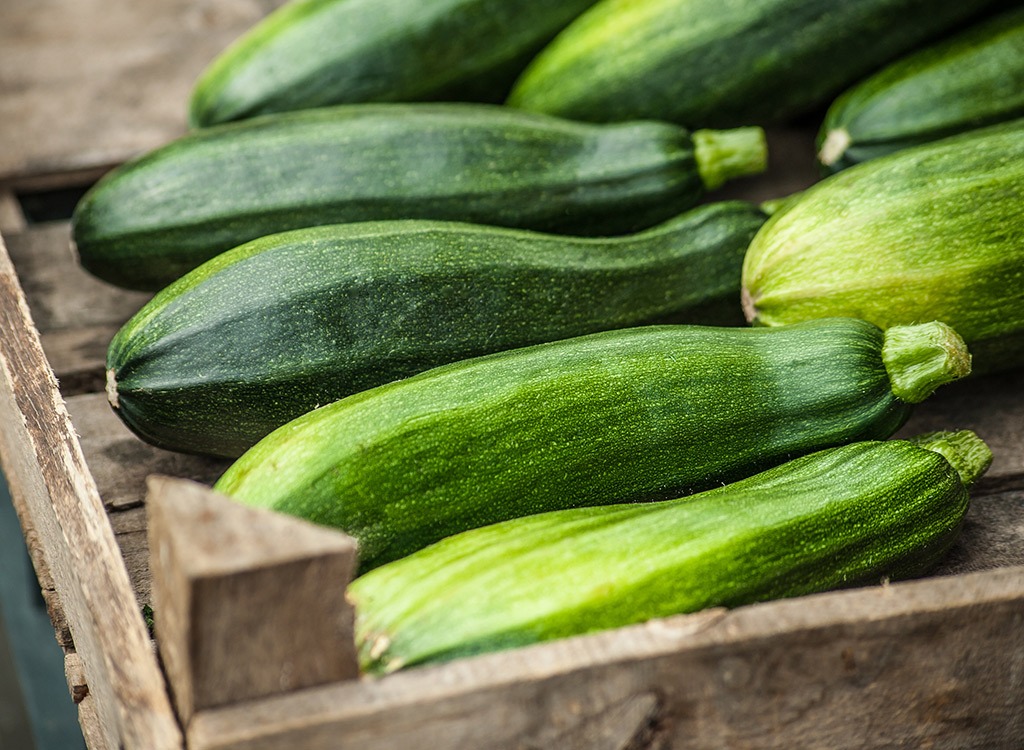

Not all superheroes wear capes. We noodle lovers unite to salute zucchini because spiralized zoodles have the potential to, ahem, squash our pasta cravings since they make for a mighty substitution in traditionally carb-heavy dishes. With a water content of 95 percent, zucchini is high-ranking on the highly hydrating foods list, too. Check out these 20 Zucchini Recipes for Weight Loss. There’s chocolate cupcakes involved, people!


There’s a reason watermelon is a picnic staple: It’s jam-packed with water to keep you hydrated on a hot day. Aptly named, watermelon is about 92 percent water, says Schapiro. Plus, it’s filled with nutrients like vitamins A, B6, and C, as well as lycopene and antioxidants. “Use watermelon to flavor your water, or even puree it to make a healthy ice pop,” Schapiro suggests.
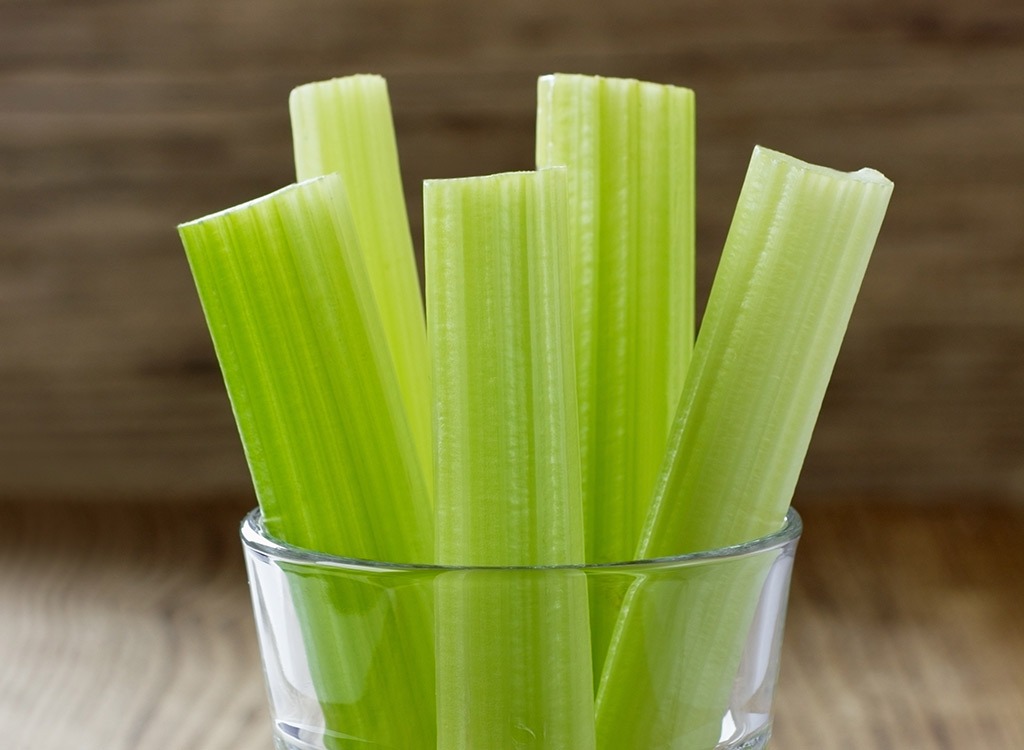

Lean, green, and a cancer-fighting machine, your Bloody Mary’s sidekick is 95 percent water. A University of Illinois study found that luteolin, a flavonoid in celery, has the potential to inhibit cancer cell growth, especially in the pancreas. Another study from the University of Missouri found that apigenin, a compound found in celery, can stop breast cancer cells from multiplying and spreading.


Rabbits are on to something: Carrots are 90 percent water and are high in fiber. On top of that, they’re good for your eyes. “Carrots are really important for good vision,” Schapiro says. “They also help your eyes glisten by supporting the moisture and mucous membranes and they help distinguish between night and day,” Sneak more into your diet by chopping them up and add them to a salad, or snacking on them with some hummus or guacamole, Schapiro suggests. Discover the 22 Best & Worst Popular Hummus Choices so you know what to dip your orange veggie into!


We’re rooting for this root veggie that’s 95 percent water. Go ahead, snack on radishes like carrots; you can get them already rinsed and bagged, says RDN Rebecca Scritchfield, author of the book Body Kindness. “Radishes are known for their cooling effect. The natural heat or spicy flavor of a radish acts on the body to help alleviate excess heat in the body,” she says. They’re also a great source of vitamin c, phosphorus and zinc, keys minerals, and antioxidants that protect cells and nourish tissues,” Scritchfield says.


Oranges tend to get all the credit when it comes to vitamin C. But kiwis actually have more vitamin C than an orange, Scritchfield says. Kiwi is made up of 85 percent water and has as much potassium as a medium banana. “It also has a low glycemic index, which means fewer spikes in blood sugars for a more sustained release of energy,” she says. This tropical fruit will satiate your sweet tooth and is the perfect addition to a fruit salad. Speaking of vitamin C, it’s crucial you pair it with zinc when you’re trying to fend off the common cold. Nosh on these 20 Food Combos That Prevent Common Colds when you feel like you need an immunity boost!
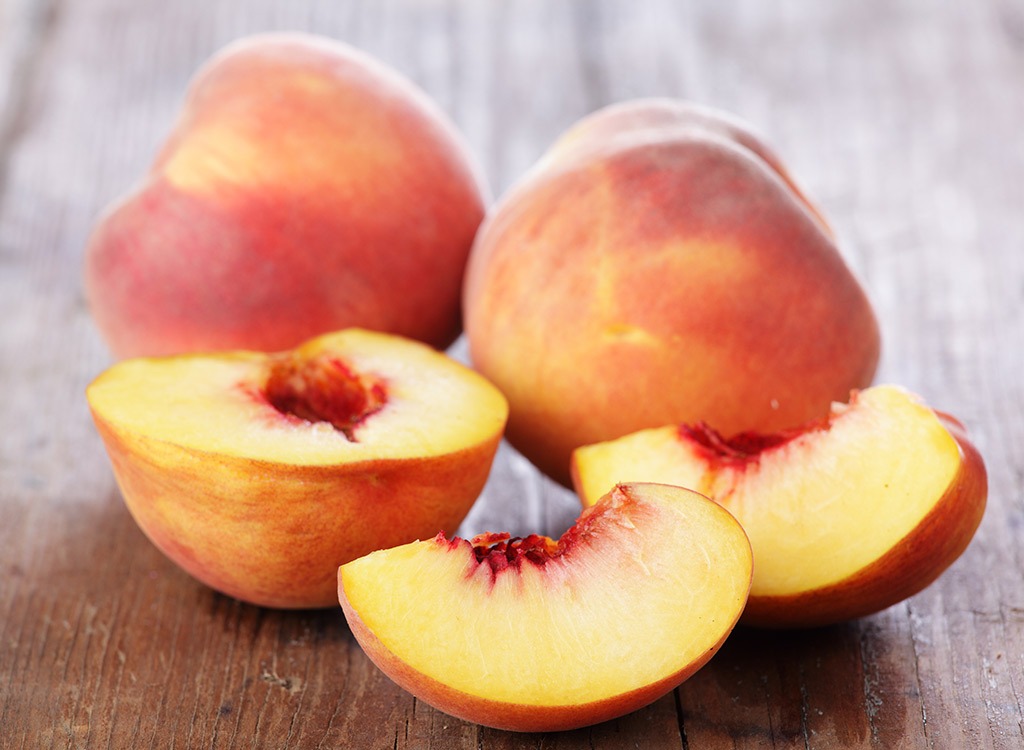

We’re peachy-keen on this fuzzy fruit with 88 percent water content. Sure, they’re delicious and they’re also fun to pick at orchards (or even wineries, like in Texas!). But, the stone fruit (meaning there’s a pit in the middle) has the potential to prevent obesity-related diseases, including diabetes and cardiovascular disease, according to researchers from Texas A&M.


Spuds contain about 80 percent water and are a good source of potassium, a key mineral in maintaining healthy blood pressure. But when it comes to water content, not all potatoes are created equal. Waxy varieties—like red skins—tend to have a higher water content than other varieties like russets. Pro tip: Baking your potatoes with the skin on will retain much more potassium than peeling, cubing and boiling, Scritchfield explains. Top baked potatoes with broccoli, lean proteins, cheese and even beans for a hearty meal.


Broccoli certainly earned its cruciferous crown. “From a nutritional standpoint, this flowering head of cruciferous goodness might qualify as top dog among the vegetable kingdom,” says Marci Clow, MS, RDN at Rainbow Light. It’s a nutritional powerhouse and provides disease protective phytonutrients, antioxidants, fiber, vitamins, minerals and tastes great. Plus, it’s 91 percent water. While you might be accustomed to steaming your broccoli as a dinner side dish, you can sneak it into more meals. Try chopping it up for salads, adding it to creamy soups, or sauté it for omelets, Clow suggests.
READ RELATED: Courtney Love expresses support for Johnny Depp and says he 'saved her life' after overdose
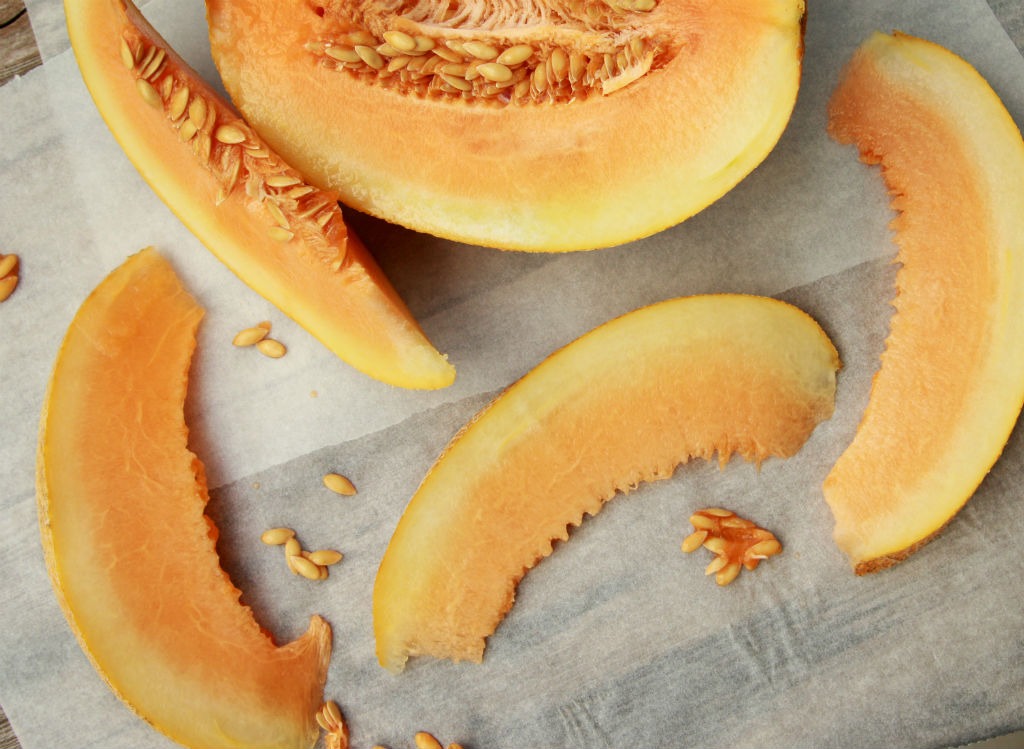

You can count on cantaloupe to hold up well in fruit salads. But some other delish options? Add it to a kebab with grapes and chunks of cheese, suggests Clow. Or, try incorporating the tropical fruit in a salsa (mind, blown!), Clow suggests. The water content in cantaloupe registers at 90 percent and is a good source of beta-carotene and vitamin C.
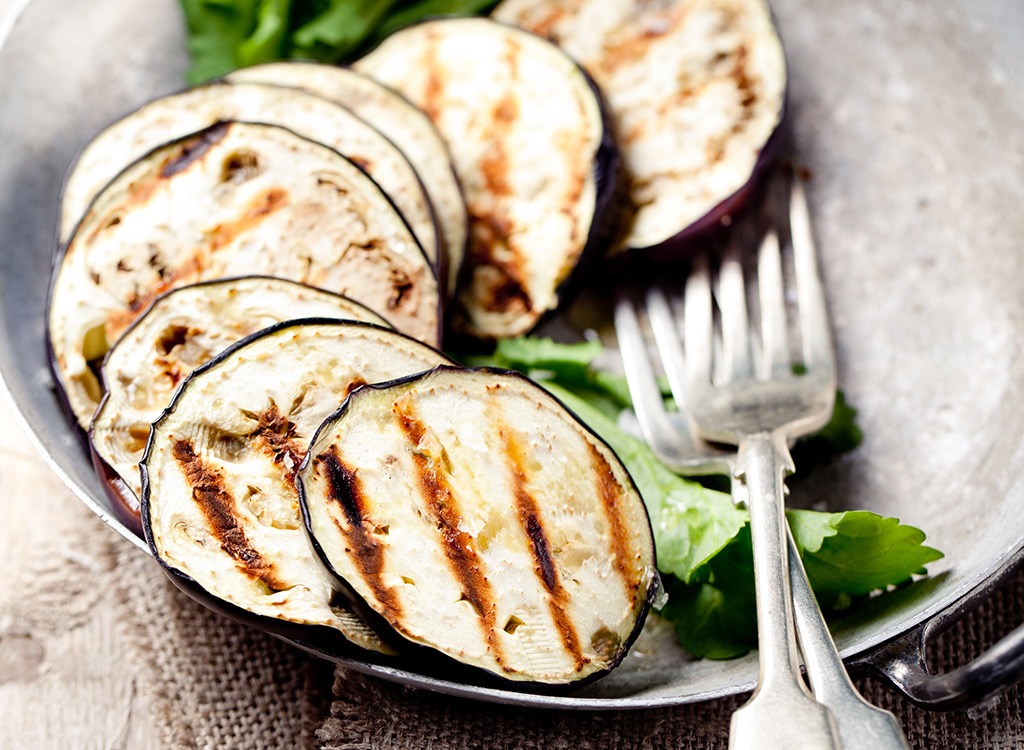

Taste the rainbow—nature’s rainbow, that is. Eggplants come in purple, green, orange, white and striped varieties, says Alexandra Miller, RDN, LDN and Corporate Dietitian at Medifast, Inc. With a water content of about 89 percent, eggplants are a hydrating vegetable you’ll want to be sure to include in your diet, since they’re low in calories and a good source of dietary fiber, too.
Eggplants are also a source of copper, B vitamins, manganese, vitamin K, and potassium, nutrients that support a healthy metabolic, immune, and cardiovascular system, she says. Steer clear of eggplant dishes that have recipe titles like “crispy” or “breaded,” as well as eggplant dips because they are often high in calories and unhealthy fats, Miller warns. Instead, Miller offers up lots of healthy alternatives: Add eggplant to curries, stir-fries, kabobs, sandwiches or pasta dishes. You can also use it as a meat alternative (think: eggplant burgers). Another option? Swap lasagna noodles with thin slices of eggplant for a lower-calorie, reduced-carb lasagna. And the next time you’re craving pizza, make one with eggplants by using horizontally cut eggplant circles as the crust. Pile on diced tomatoes or pizza sauce, part-skim mozzarella cheese, and fresh basil, Miller suggests. For more ways to eat fewer carbs, try these 22 Carb-Cutting Hacks Diet Experts Love!


For the uninitiated, jicama (also known as “Mexican water chestnuts”) lend a satisfying crunch and can also be slightly sweet. You might recognize the root veggie from a crudite platter. Jicama is made up of about 90 percent water but is also high in vitamin C, iron, and potassium. Street vendors in Mexico use it as a staple in fruit salads by combining it with chunked mango, watermelon, and pineapple, all seasoned with chili powder and lime juice. Yum!
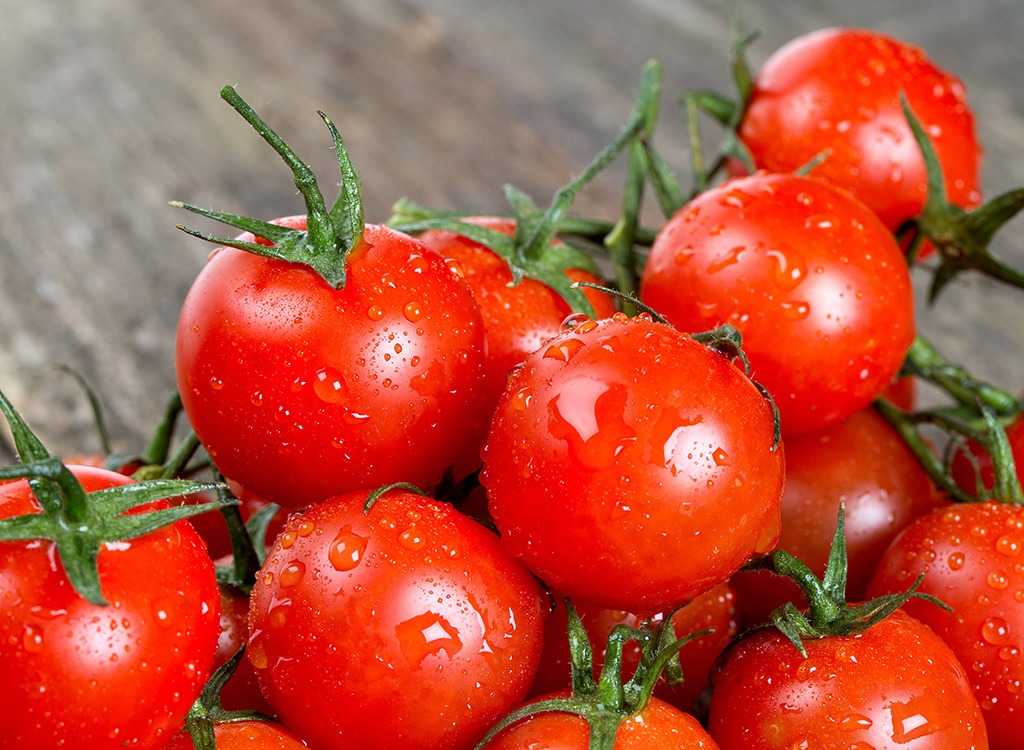

Tomatoes have a water content of almost 95 percent, which makes them one of the more hydrating non-starchy vegetable options, Miller says. “Tomatoes are also packed with nutrition. They are a rich source of lycopene, a carotenoid known for its cancer-fighting effects, potassium, and vitamins A and C.” But watch out for tomato-based products high in added sugars, including some pasta and pizza sauces; here’s a guide of the 40 Best and Worst Pasta Sauces—Ranked. For a weeknight side, throw tomatoes on the grill with a little olive oil to enjoy as a side dish, or make a meal of tomatoes by stuffing them with low-fat cottage cheese or with tuna, chicken, or shrimp salad.


If Mother Nature was to put out a candy bowl, we suspect it’d be filled with sweet berries. Strawberries have a water content of 92 percent, making them the most hydrating berries. (Raspberries register at 87 percent H20 while blueberries boast 85 percent.) Double up on your hydration and add some strawberries to your water with some mint sprigs for a delish drink that’s almost worthy of an umbrella.


From a nutritional standpoint, iceberg lettuce is oftentimes considered the weakest link of salad greens. But it’s a rich source of water, Miller says, with its H20 content registering at 96 percent. It’s also low in calories (with just 10 calories per cup) and can be a source of fiber and vitamins A and C. Add it to sandwiches or wraps for some extra crunch, Miller suggests. Or use large iceberg lettuce leaves as wraps or buns. And be sure to check out these 11 Underrated Salad Greens to mix in with your H20-packed iceberg.


If you haven’t joined Team Cauliflower yet because you’ve turned your nose up at the lack of flavor in the cruciferous veggie, it might be time to give it another go. Cauliflower’s superpower is that it can take on the flavors you throw its way, thickening up a potato soup without sacrificing the creamy, potato flavor or absorbing cheese flavors. Cauliflower clocks in with 92 percent water content and it’s high in fiber, with 3.5 grams in one cup of cooked cauliflower. Make the most of this easy way to eat your water but trying out these 17 Genius Ideas for Cooking with Cauliflower!


With water content of 86 percent, no wonder this tropical fruit packs hydration. Pineapple is usually known for its high levels of vitamin C, vitamin B, magnesium, potassium, and manganese, but clearly its benefits don’t stop there. It also contains bromelain, an enzyme with anti-inflammatory properties. Blending the pineapple for a quick summer drink with ice is highly recommended, but eating it straight from the cutting board is a good tactic to use its hydration powers, too. Get our tips on How to Cut Pineapple Into Perfect Rings.


Starfruit is the number one most hydrating fruit on the planet, with more than 91 percent of its body consisting of water. It’s a yellow fruit native to Southeast Asia, with edible skin and mildly sour flesh. Besides being hydrating, star fruit is a good source of fiber and vitamin C. It also contains plant compounds that have been shown to be beneficial to the liver—studies have shown they reduce the risk of fatty liver and even liver cancer. To enjoy starfruit, make sure it’s ripe, then cut the ends off slice it, removing the seeds.


Grapefruits are low in calories but high in nutrients, and not to mention, consist of more than 90 percent water. They are rich in vitamins A and C, and a source of powerful antioxidants that may help boost your immune system. What’s not to like? Eat it for breakfast with a serving of yogurt, and you’ll set yourself up for a fiber-filled day where you’re able to control your appetite better. The freshly squeezed juice, on the other hand, makes a great cocktail mixer that will provide a delicious treat and some health benefits.


A 1-cup serving of plain yogurt is made up of about 88 percent water, adding hydration to its already long list of nutritional benefits. Not to mention, it’s a great source of protein and gut-healthy probiotics. But stick to plain, non-flavored yogurt if you can—the flavored versions, even ones where only fruit is involved, often pack a lot more sugar that may end up dehydrating you.


It makes sense soup would be on this list—it’s made mostly of water. We’re all familiar with soup’s healing benefits, demonstrated by the fact that it’s commonly considered good sick food. Adding soup to your daily meal lineup may promote weight loss. Think of soup as a blank canvas to load up with more nutrition by adding veggies.
STAY INFORMED: Sign up for our newsletter to get the latest coronavirus foods news delivered straight to your inbox.


Apples are made up of more than 85 percent water, but they’re better known as a great source of fiber. Still, it’s good to know that the apple a day you’re eating for general health, is also keeping you hydrated.
Source:








